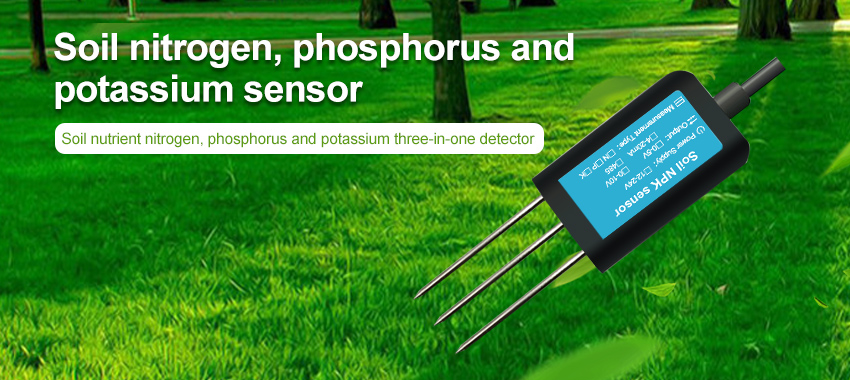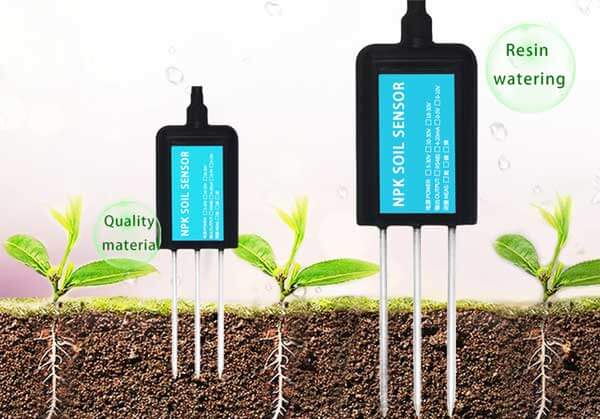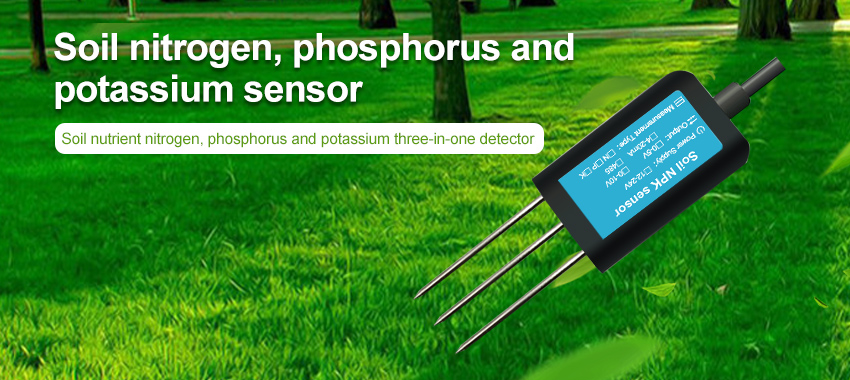Achieving high crop yield and quality is a fundamental goal in agriculture. To accomplish this, farmers need to optimize their farming practices based on accurate information about soil conditions. Soil sensor technology has emerged as a powerful tool that enables farmers to monitor and manage essential soil parameters in real-time. By leveraging soil sensors, farmers can enhance crop yield and quality by making data-driven decisions. This article explores the significance of soil sensor technology in enhancing crop yield and quality, its applications in agriculture, and the benefits it offers to farmers.

- The Role of Soil Sensor Technology: Soil sensor technology allows farmers to measure and monitor various crucial parameters in the soil, including moisture content, temperature, nutrient levels, and pH. These sensors provide real-time or periodic data, enabling farmers to gain insights into soil health, nutrient availability, and water requirements. This information empowers farmers to make informed decisions and implement targeted strategies to optimize crop yield and quality.
- Applications of Soil Sensor Technology: 2.1. Irrigation Management: Soil sensors play a vital role in optimizing irrigation practices. By continuously monitoring soil moisture levels, farmers can determine the ideal timing and amount of irrigation required for different crops and soil types. This precise irrigation management not only prevents under- or over-watering but also ensures that plants receive adequate water for optimal growth. By avoiding water stress, crops can achieve higher yields and improved quality.
2.2. Nutrient Management: Soil sensor technology enables farmers to optimize nutrient management by monitoring nutrient levels in the soil. By constantly measuring parameters like electrical conductivity (EC) and pH, farmers can assess the availability of essential nutrients and adjust fertilization accordingly. This targeted and precise approach helps avoid nutrient deficiencies or excesses, promoting healthier plant growth, increased yield, and improved crop quality.
2.3. Soil Health Assessment:
Soil sensor technology facilitates the assessment of soil health by monitoring key soil parameters. With sensors measuring factors such as temperature, organic matter content, and pH, farmers gain valuable insights into soil fertility and overall soil health. By understanding the soil conditions, farmers can take appropriate steps to improve soil quality, enhance nutrient cycling, and create an optimal environment for crop growth, ultimately leading to higher yields and improved crop quality.
2.4. Decision Support Systems:
Soil sensor technology forms a critical component of decision support systems in agriculture. By integrating soil sensor data with weather forecasts, satellite imagery, and other relevant data sources, farmers can receive real-time recommendations and insights on optimal farming practices. Decision support systems powered by soil sensor technology help farmers make informed decisions regarding irrigation, fertilization, pest management, and other aspects of crop production, leading to enhanced crop yield and quality.
- Benefits of Soil Sensor Technology in Agriculture:
- 3.1. Improved Resource Efficiency: By accurately monitoring soil moisture levels, soil sensor technology allows farmers to optimize irrigation practices. This precision reduces water waste and improves water-use efficiency, conserving valuable water resources. Furthermore, by fine-tuning fertilization based on actual nutrient availability detected by soil sensors, farmers can minimize nutrient losses and reduce the environmental impact associated with excessive fertilizer use.
3.2. Enhanced Crop Yield:
By providing real-time information about soil moisture, nutrients, and other vital parameters, soil sensor technology helps farmers optimize growing conditions for crops. Precise irrigation and targeted nutrient management ensure that plants have access to the necessary resources for optimal growth, resulting in higher crop yields.
3.3. Improved Crop Quality:
Soil sensor technology contributes to improved crop quality by facilitating precise control over cultivation practices. Through real-time monitoring of soil conditions, farmers can fine-tune irrigation, adjust nutrient applications, and mitigate potential stress factors. These measures enhance the development of healthy plants, leading to superior crop quality with desirable characteristics such as size, color, taste, and nutritional value.
3.4. Sustainability and Environmental Stewardship:
By supporting efficient use of water and nutrients, soil sensor technology promotes sustainability and environmental stewardship in agriculture. Reduced water usage and optimal nutrient management minimize the impact on water resources and reduce the risk of nutrient runoff, groundwater contamination, and ecosystem degradation. By adopting these practices, farmers contribute to a more sustainable and environmentally friendly agricultural system.
- Integration and Challenges: Soil sensor technology can be integrated into farming systems using various approaches. Wireless sensor networks and Internet of Things (IoT) technologies facilitate data collection from multiple sensors distributed across fields. This data is then transmitted to centralized platforms for analysis and decision-making support. Challenges associated with soil sensor technology include initial investment costs, calibration, data interpretation, and technical expertise. Ongoing research and development efforts aim to address these challenges and make soil sensor technology more accessible and user-friendly for farmers.

Conclusion: Soil sensor technology has revolutionized agriculture by enabling farmers to optimize crop yield and quality. Through precise monitoring of soil parameters, farmers can implement data-driven decisions related to irrigation, nutrient management, and overall cultivation practices. The benefits of soil sensor technology include improved resource efficiency, enhanced crop yield, better crop quality, and environmental sustainability. By harnessing soil sensor technology, farmers can maximize their productivity while minimizing environmental impacts, contributing to a more sustainable and prosperous agricultural sector. Continued advancements in sensor technology and broader adoption among farmers will further unlock the potential of soil sensor technology in enhancing crop yield and quality.
